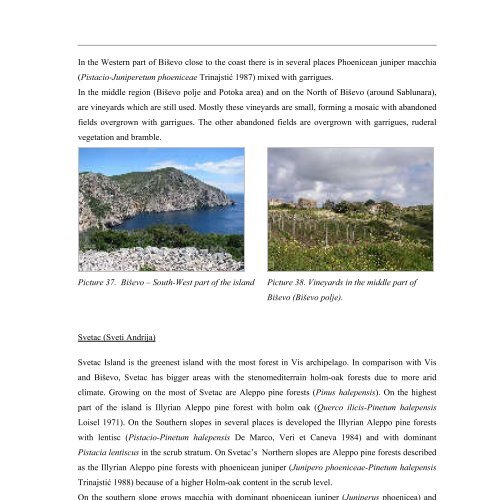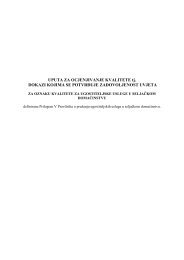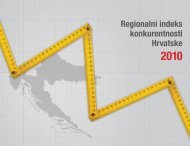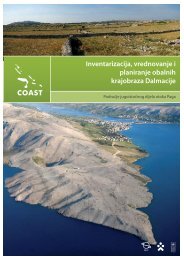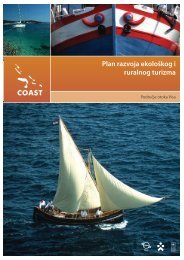PriruÄnik o kartama staniÅ¡ta Dalmacije - UNDP Croatia
PriruÄnik o kartama staniÅ¡ta Dalmacije - UNDP Croatia
PriruÄnik o kartama staniÅ¡ta Dalmacije - UNDP Croatia
- No tags were found...
You also want an ePaper? Increase the reach of your titles
YUMPU automatically turns print PDFs into web optimized ePapers that Google loves.
In the Western part of Biševo close to the coast there is in several places Phoenicean juniper macchia(Pistacio-Juniperetum phoeniceae Trinajsti 1987) mixed with garrigues.In the middle region (Biševo polje and Potoka area) and on the North of Biševo (around Sablunara),are vineyards which are still used. Mostly these vineyards are small, forming a mosaic with abandonedfields overgrown with garrigues. The other abandoned fields are overgrown with garrigues, ruderalvegetation and bramble.Picture 37. Biševo – South-West part of the islandPicture 38. Vineyards in the middle part ofBiševo (Biševo polje).Svetac (Sveti Andrija)Svetac Island is the greenest island with the most forest in Vis archipelago. In comparison with Visand Biševo, Svetac has bigger areas with the stenomediterrain holm-oak forests due to more aridclimate. Growing on the most of Svetac are Aleppo pine forests (Pinus halepensis). On the highestpart of the island is Illyrian Aleppo pine forest with holm oak (Querco ilicis-Pinetum halepensisLoisel 1971). On the Southern slopes in several places is developed the Illyrian Aleppo pine forestswith lentisc (Pistacio-Pinetum halepensis De Marco, Veri et Caneva 1984) and with dominantPistacia lentiscus in the scrub stratum. On Svetac’s Northern slopes are Aleppo pine forests describedas the Illyrian Aleppo pine forests with phoenicean juniper (Junipero phoeniceae-Pinetum halepensisTrinajsti 1988) because of a higher Holm-oak content in the scrub level.On the southern slope grows macchia with dominant phoenicean juniper (Juniperus phoenicea) andlentisc (Pistacia lentiscus Br.-Bl. 1931). This type of macchia is described on the map asMediterranean Phoenician juniper woods (Oleo-Juniperetum phoenicaea Bruno et. al. 1983), althoughthere were no olives (Olea europaea). This macchia type grows in a mosaic with the Illyrian rosemarygarrigues (Erico-Rosmarinetum H-i. 1958).This island was inhabited but today only a few small vineyards are still in use. The abandonedvineyard terraces are mostly overgrown with garrigues and macchia. In adlittoral zones a dominanthabitat type, the Sea-cliff and rocky shore aerohaline (Critmo-Limonion Br.-Bl. Molinier 1934) is111


